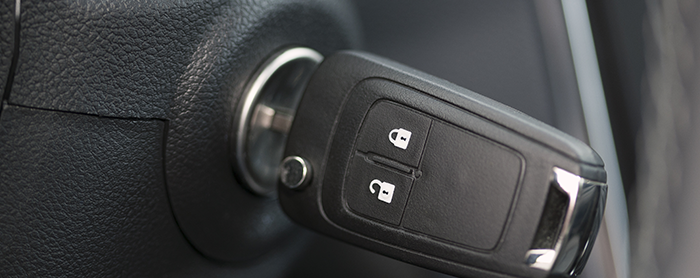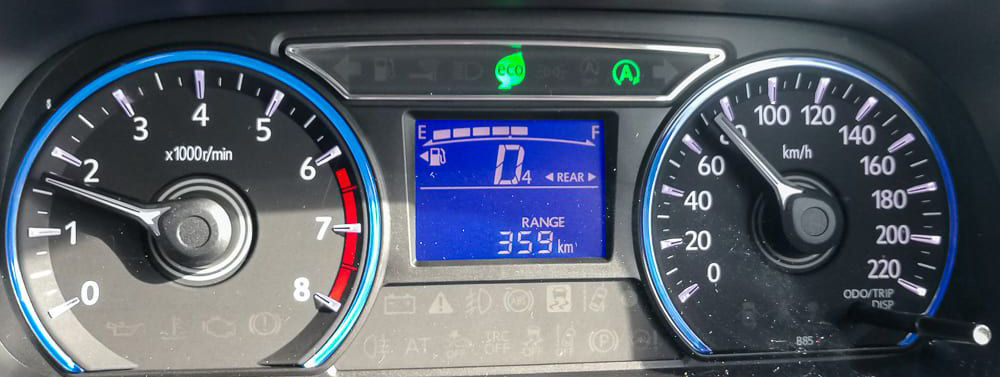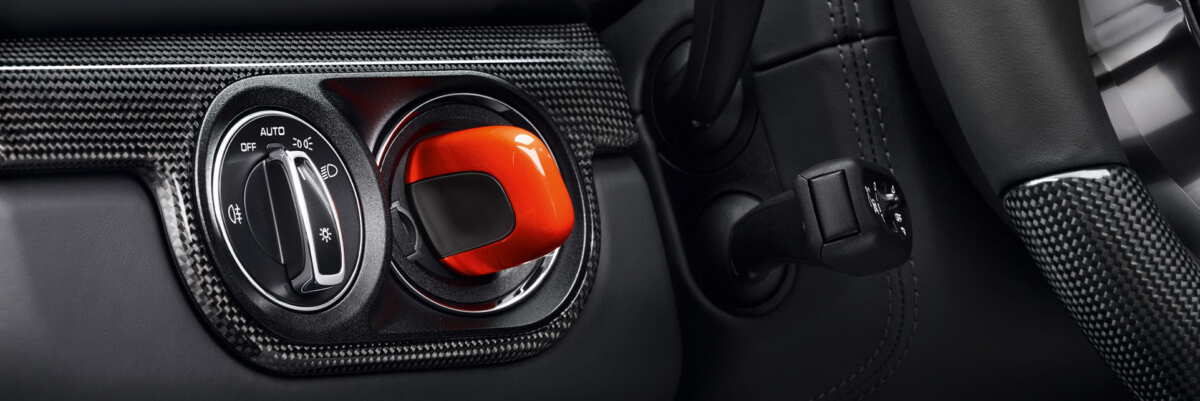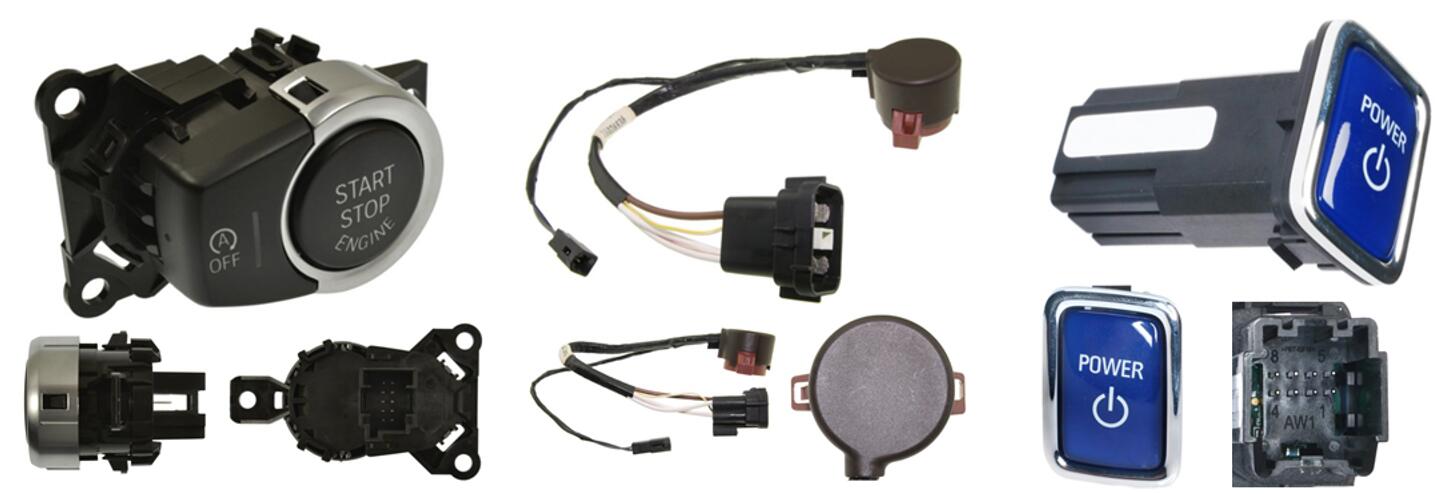
The ignition switch is a control device that takes charge of the engine ignition. With the development of automotive electronics, the keyless system goes into service without the key. The ignition switch can be simplified to a button. In any case, the ignition switch is a crucial component of the ignition system, even the engine and the vehicle.
5.2 Insert the key and it won't turn
The function of the ignition switch is to turn the car key manually, and the key drives the ignition lock cylinder to turn. The rotation of the ignition lock cylinder causes the ignition switch's internal conductive contacts to turn on. Thus, the ignition switch works to turn on the vehicle's ignition circuit. Then the ignition process finishes.
The ignition switch is the most important switch in the car circuit. It is the control hub for each branch of the circuit, allowing the ignition coil to perform its duty. The ignition switch has four positions: START, ON, ACC and LOCK.
The ignition switch must be working properly because it plays a significant role in the engine starting. Generally, it can be used up to 30000 times until replaced.
● The installation of the ignition switch should take into account the requirements of dust, water and shock resistance.
● The ignition switch is typically fixed to the steering column. The installation must take into account ease of use, operation for the driver and complete verification of the ergonomics. When the key is inserted into the ignition switch, it is convenient for the driver to start the engine.
● At the same time, the ease of dismantling and installation must be satisfied in terms of the fixed structure. The convenience of after-sales maintenance must be taken into account.
The ignition switch is a manually operated component. It must be designed with the internal travel of the switch in mind. The movement limit position of each gear must be calibrated to meet the movement travel requirements of the switch.
The ignition switch plays a big role in the car. This is never too much to emphasize. However, car accidents caused by faulty ignition switches have forced people to pay more attention to this component in recent years.
Knowing about car ignition switch faults can help us identify problems in advance and deal with them in time to avoid serious accidents.
In the position of starting and preheating, the working current is very large. As a result, the switch shouldn't connect for a long time. We must operate by hand in these two situations to overcome the spring force and hold the key.
When we let go of the key, it will pop back to the ignition position. They can't position themselves, but other positions are available.
A faulty ignition switch can cause serious problems. As the ignition switch controls the turning on and off of the ignition coil, the car will not start if the ignition switch is faulty.
The direct manifestation of this is that the ignition will not start or stop. The ignition will even stop for unknown reasons, and the circuits controlled by the key will not work.

In many cases, the failure of the ignition switch is the result of long-term incorrect driving habits by the owner. Some new owners, who are in a bit of a hurry to drive, simplify many of the steps while starting. They insert the key into the ignition switch and turn it directly from the parking position to the ignition position.
You need to know that the four positions of the ignition switch are progressive. The purpose is to let the electrical equipment enter the working state one by one to relieve the burden of the car battery caused by the instantaneous power.
If you do not stay in other positions when starting the car, it will instantly increase the load on the battery, which is very harmful to both the battery and the engine. As time goes by, it will shorten the service life of the battery and will cause the engine to be difficult to start.
So the correct way to start the car is to slowly turn the key and let the electrical accessories on the vehicle get to work one by one to relieve the pressure on the battery power supply.
You can press it first for cars with a one-button start to get the vehicle powered on. Then press again, and the instrument panel light comes on, which is equivalent to "ON".
The car starts to check automatically. The fuel pump builds up oil pressure. The whole system prepares for the ignition and finally starts the car.
As qualified drivers, it's not simple for us only to know how to drive. New drivers, in particular, are reminded that getting a driving license does not mean that they can drive with confidence and boldness. They should develop good driving habits and understand more about common car faults in order to deal with unexpected situations.
The ignition switch (usually with the use of a key) freely turns on or off the main circuit of the ignition coil. It also applies to other electrical circuits. The ignition switch, commonly known as the main switch, is the component that controls the entire electrical system of the vehicle.
It comes in two types: plug-in and knob type. So in the next section, we introduce four circumstances that the ignition switch works.
Insert the key and turn it to the ACC position. Wait about 2-3 seconds to allow the main relay contacts to make solid contact. Energize the first part of the device that needs to work.
Continue to turn the key to the "ON" position. Stop and wait for 6-10 seconds to allow the fuel pump relay to engage. Wait for the various sensors to finish adjusting their status. Turn the key to the "Start" position until the engine runs continuously and returns to "ON".

Under the guidance of the ECU, an optimum position degree and optimum parameters are automatically adjusted. Finally, the engine is successfully started.
However, after stopping, you can start quickly without pausing for temporary or short periods of time. Just watch for the yellow signal light on the dashboard to go out.
5.2 Insert the key and it won't turn
Sometimes, we insert the key, but it won't turn. A little force may break the key. In fact, this is the same as the steering wheel not being able to turn. So you need to back off and turn the key in the opposite direction.
Therefore, if the key does not turn when inserted, do not twist it hard, but turn the key while turning the steering wheel. The behavior can easily solve the problem.
Under normal circumstances, the key will return to the "ON" position after the ignition starts. However, modified keys may not match the trip computer.
Occasionally, the key will not return to the "ON" position after the car gets started. If the driver does not pay attention to this symptom, it will cause other issues.
When using the key to start the car, please remember the following tips. Do not turn the key to the "START" position again after starting the car.
Do not use a processed key. Otherwise the key will not automatically return to the "on" position after ignition, and the starter will continue to work, resulting in damage to the starter or a fire due to overload.

The ignition switch must not be left in the "START" position for more than 5 seconds. If the engine is not started successfully at first, wait at least 30 seconds before starting it again.
While driving, never leave the ignition switch in the "LOCK" or "ACC" position. This will cause the steering wheel, brakes and power steering system to fail.
The button or knob of the autostart section must be activated when it accepts the presence of the smart key. The sensing distance is usually around 50 cm. In general, smart keys are also called serrated or notched, as we usually say.
It works by using mechanical starting when the autostart function is faulty. After inserting the key into the ignition switch, do a momentary dwell in each position for about 1 or 2 seconds. You can then move on to the next position when you can hear the noise of electrical equipment.
Some cars can be put directly into the "ON" position. Wait for about 6-7 seconds after all aspects of the appliance have been fully activated. Then turn the key to "START" and start the car directly.
 Lauritz Carolsfeld
Lauritz Carolsfeld  December 14, 2021
December 14, 2021
